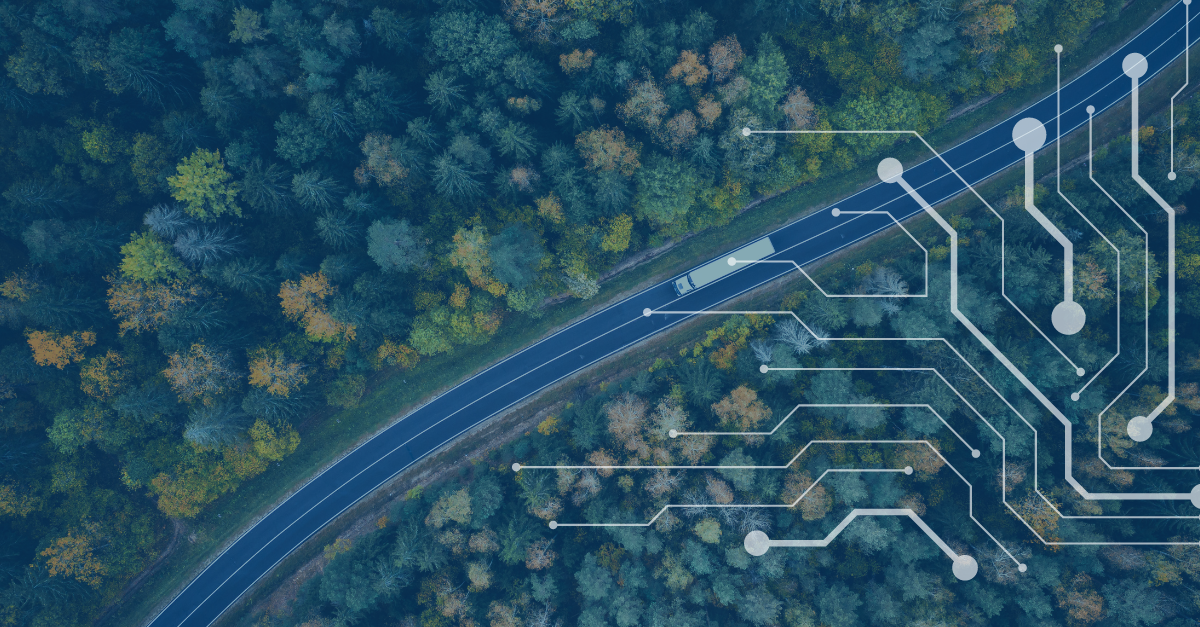The world of logistics and transportation cannot afford to slow down, and warehouse sustainability is working hard to catch up. Demand for shipping and delivery worldwide only increases as populations grow and economies expand. At the same time, logistics and transportation contribute 24% of all CO2 emissions globally, with nearly two-thirds coming from trucking, according to the International Energy Agency (IEA).
This is why major efforts are underway to reduce CO2 emissions and improve logistics and warehouse sustainability. These include efforts to grow alternative fuel fleets; increase the use of automation; reduce excess packaging, especially plastics; enforce stricter emissions standards; ramp up intermodal; and use predictive analytics to make fleets more efficient.
Clearly, technology and innovation are at the forefront of decarbonization efforts. From applying artificial intelligence (AI) to shipment optimization to making reverse logistics more efficient, there are many examples of how technology is used this way.
The Intersection of Technology and Sustainability
As technology reshapes logistics and transportation, it goes hand in glove with logistics and warehouse sustainability efforts. The focus is improving operational efficiency (cost reduction) that has a secondary effect (environmental benefits): fewer miles driven, more stops per mile, optimized space (warehouses, trucks, containers), lowering vehicle idling time, etc.
Here are some key sustainability goals in logistics and transportation, and some examples of how they’re being achieved:
- Reducing carbon emissions: companies are optimizing routes, using alternative fuels, and investing in electric vehicles.
- Minimizing waste: reusable packaging, optimized inventory management to keep stock levels right-sized, and recycling/reuse/recommerce are helping reduce logistics waste.
- Improving energy efficiency: LEED certification and smart logistics technologies (IoT, RFID, data analytics, etc.) improve warehouse sustainability and drive predictive fleet maintenance.
Warehouse Sustainability Solutions
There’s a lot of focus these days on finding ways to increase warehouse sustainability. Companies pursuing this course can employ a number of tactics in pursuit of this goal.
Energy management systems connected to smart grids and renewable energy such as solar and wind reduce energy consumption. More sustainable packaging solutions abound, from automated packaging lines to plastic reduction efforts. AI-controlled energy-efficient LED lighting and HVAC systems can also reduce energy consumption in the warehouse.
Automation and robotics for order fulfillment and material handling optimize both the movement and storage of products, increasing warehouse sustainability while improving productivity and order accuracy. Modern inventory management systems use machine learning (ML) and AI to optimize demand forecasting and planning, cutting down on waste by enabling just-in-time ordering. Collectively, these technologies help drive sustainable, efficient warehouse operations.
Outdoor gear retail co-op REI demonstrated you can think outside the (warehouse sustainability) box when designing a fulfillment center. The Lebanon, Tenn. facility features floor-to-ceiling windows, skylights, and lots of worker amenities. It’s also LEED-certified and uses lower-impact concrete and steel, which makes it a zero-waste facility.
Toward Greener Yard Operations
EVs and automated vehicles are also making their way into yard operations, which oversee gate security, asset management (trucks, trailers, chassis, containers), and vehicle flow in and out of factories and warehouses.
Companies like Albertson’s are growing their fleet of EV terminal tractors, which ferry trailers and containers around the yard. EVs for cargo handling are also making their way into port operations.
Advanced AI-driven yard technology complements legacy YMS systems. By analyzing data from security cameras to automate yard operations, vehicle flow is enhanced, reducing emissions. By capturing multiple identification numbers on incoming trucks, gate clearance is optimized, and idling time is reduced. These systems can track all yard assets in real time, improving efficiency and saving on labor costs.
Regulatory compliance is a main driver of this technology push. California’s ISO-WAIRE makes warehouse operators responsible for emissions caused by third-party trucks accessing their yards. New York is looking to follow suit with its own proposed Clean Deliveries Act.
Tech-Driven Logistics Sustainability
AI and ML enable smarter route planning, cutting unnecessary miles and fuel consumption. Algorithms analyze vast amounts of real-time and historical data, optimizing routes and loads to reduce trips and lower emissions. Predictive maintenance using AI and telematics keeps vehicles running cleaner, reducing the environmental impact.
Growing EV fleets is another way companies are looking to make their logistics more sustainable. The number of medium- and heavy-duty EV trucks in the U.S. grew by 5x in 2023, according to the Environmental Defense Fund, reaching nearly 13,000 vehicles. Much of this was due to Amazon’s order for 100,000 EV trucks from Rivian by 2030, as well as deployments by Ryder and Frito-Lay.
Tech Innovation Is Powering Greener Supply Chains
Leveraging technology to reduce the supply chain’s environmental impact results in cost savings from greater efficiency and reduced waste. Productivity is improved as processes are optimized. Also, prioritizing sustainability enhances brand reputation and customer satisfaction.
EAIGLE, a pioneer in AI-driven systems for gate, yard, and loading dock operations, helps companies improve both warehouse sustainability and security. EAIGLE’s AVAC™ (Automated Vehicle Access Control) uses Optical Character Recognition (OCR) and AI to capture dozens of vehicle identifiers via security cameras. This improves security, enhances traffic flow, and reduces truck emissions by cutting down on dwell time.
YardSight™ from EAIGLE uses that same AI-driven data capture to identify available loading docks and parking spots in real time. Arriving truck drivers can quickly navigate to their destination, increasing the efficiency of inbound/outbound logistics. To learn more about how EAIGLE’s comprehensive approach helps create resilient, environmentally compliant facilities, request a demo today.


